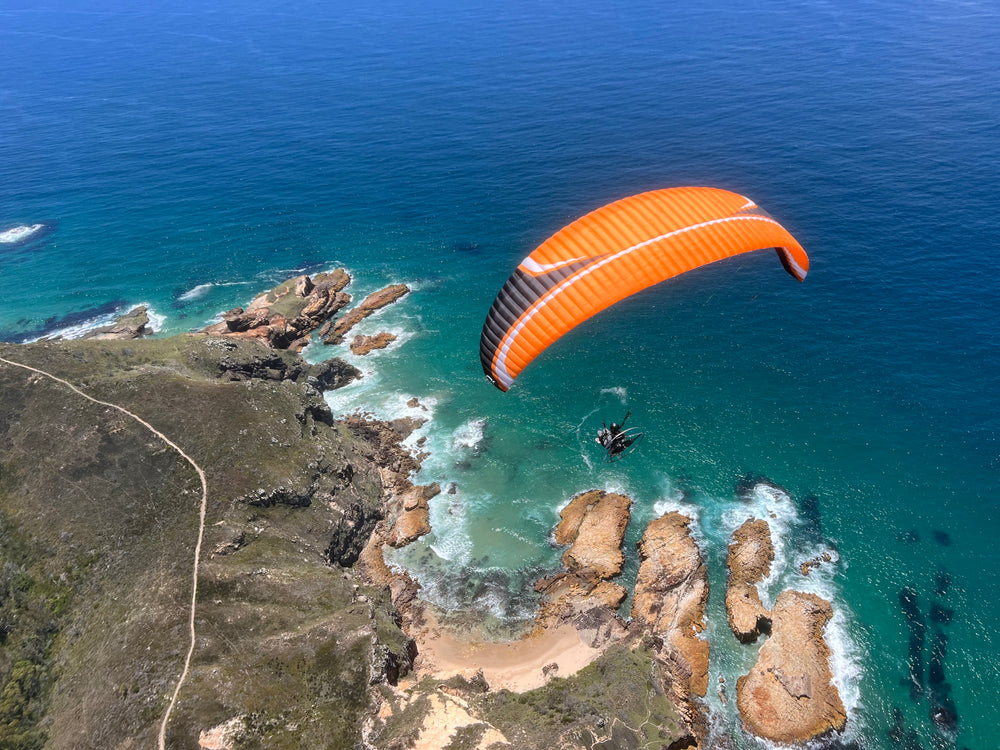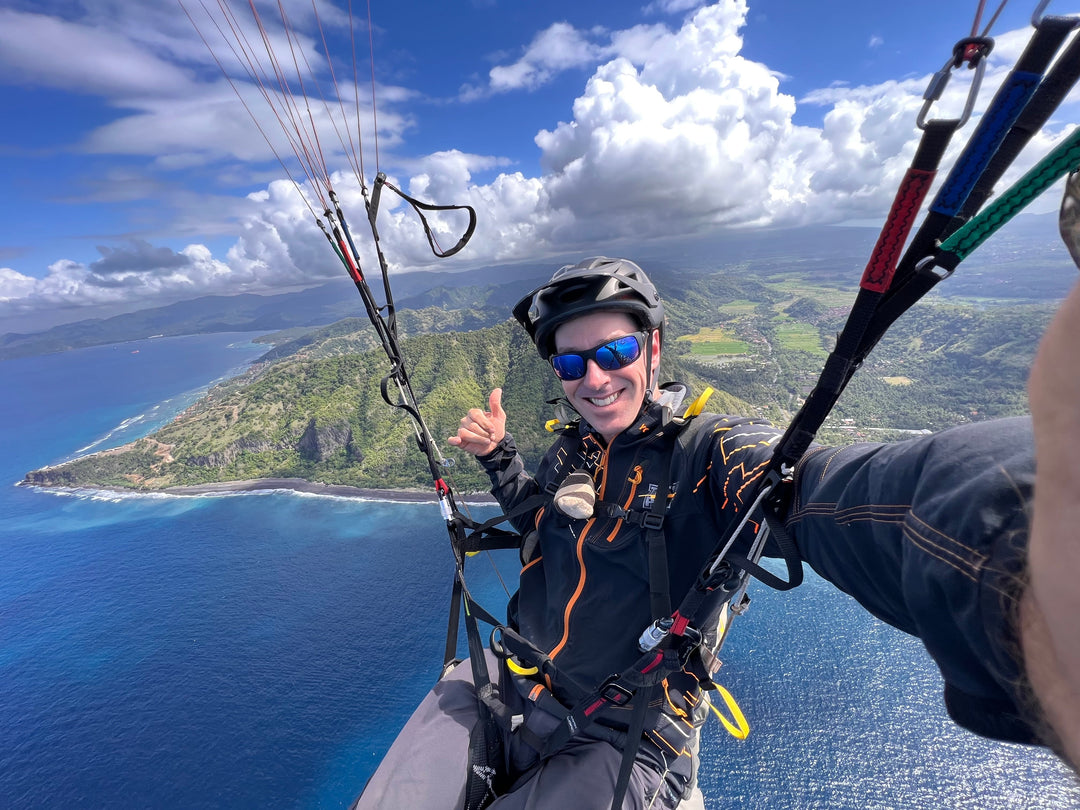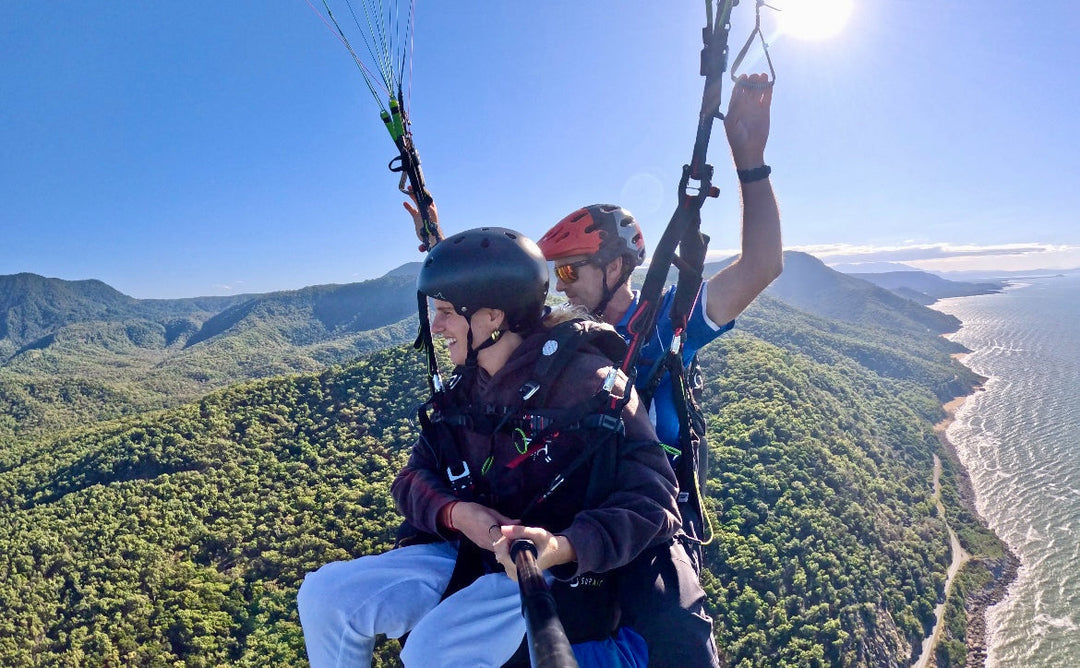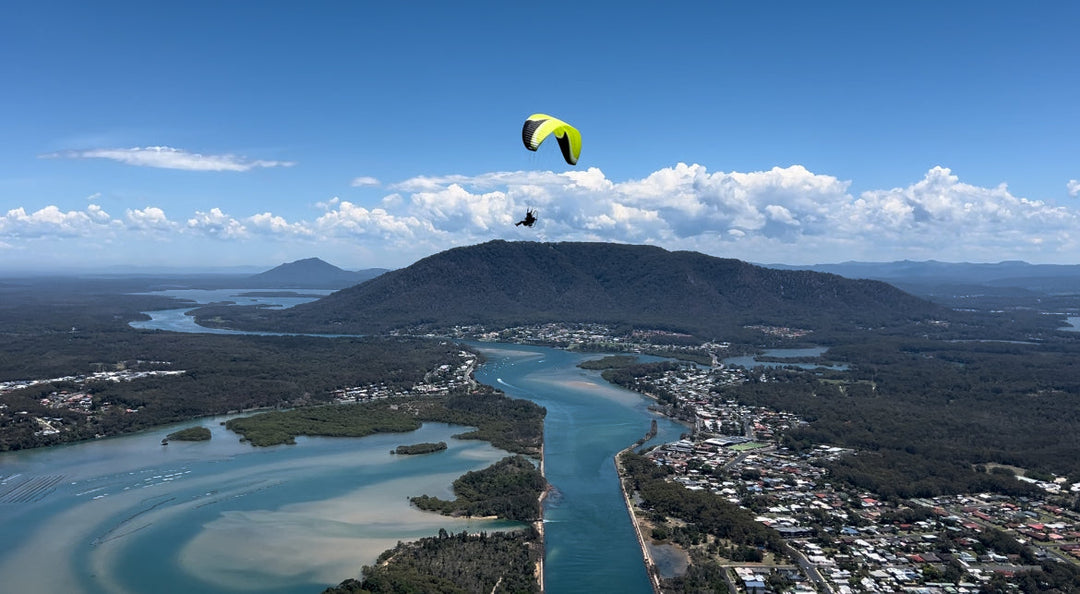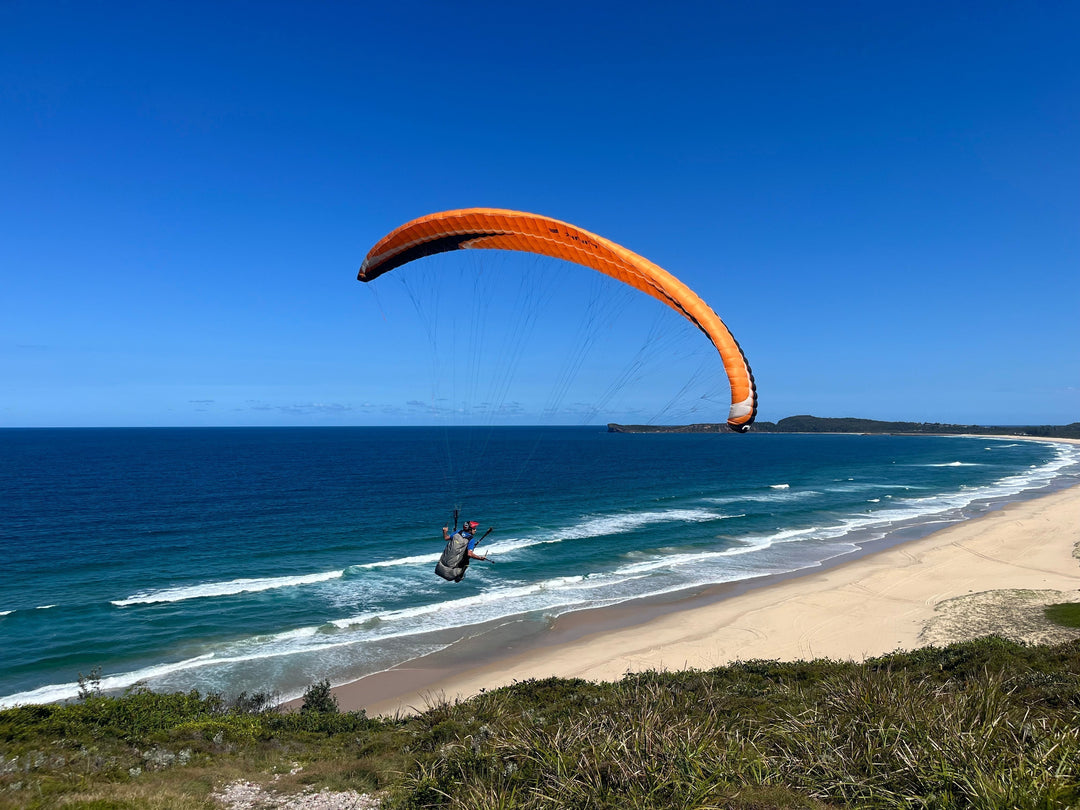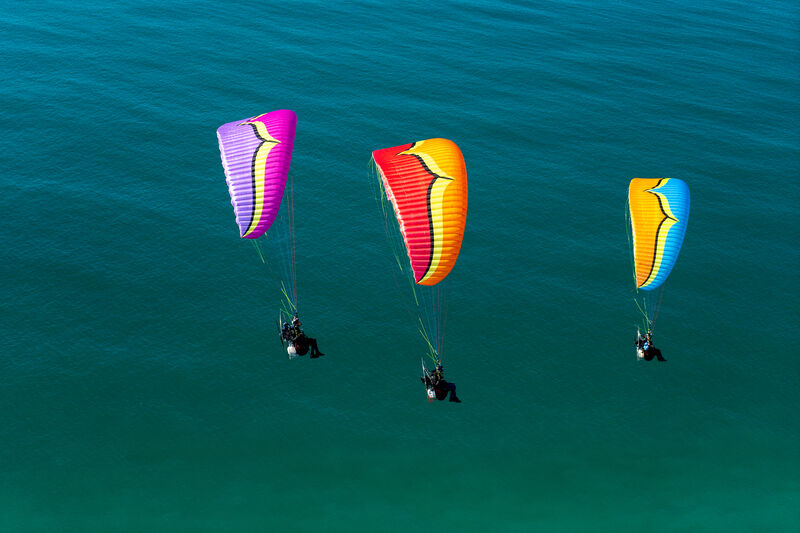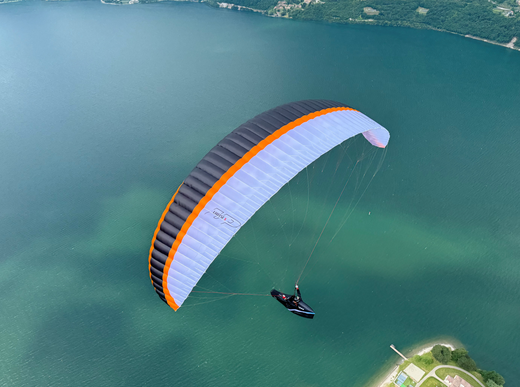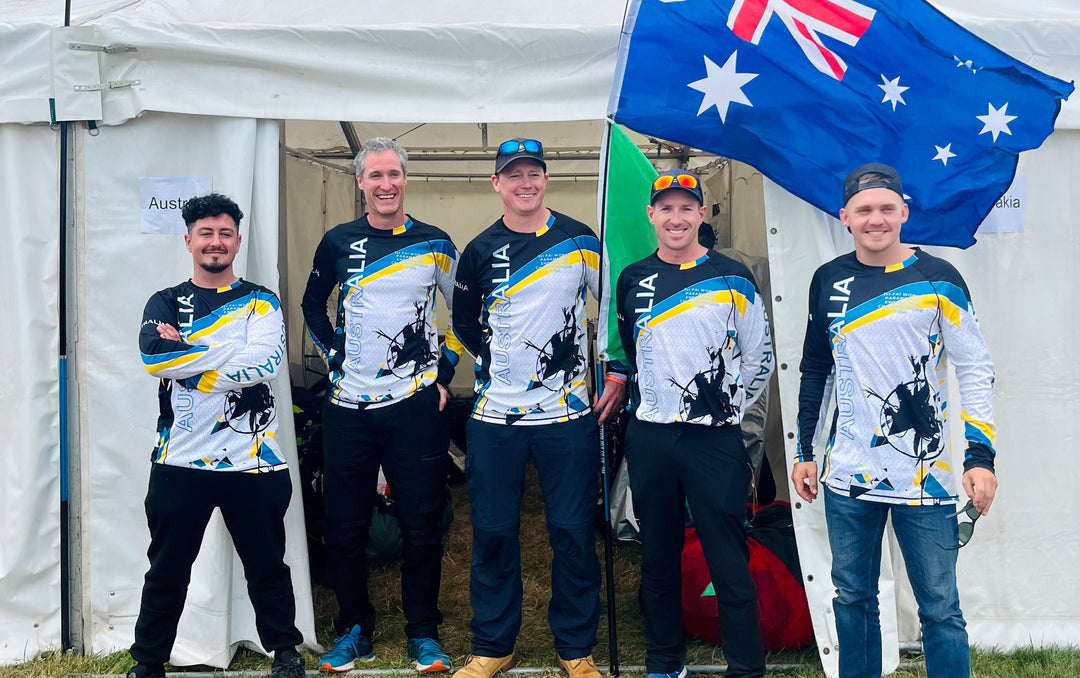How to Progress from a Beginner to an Advanced Paraglider Pilot
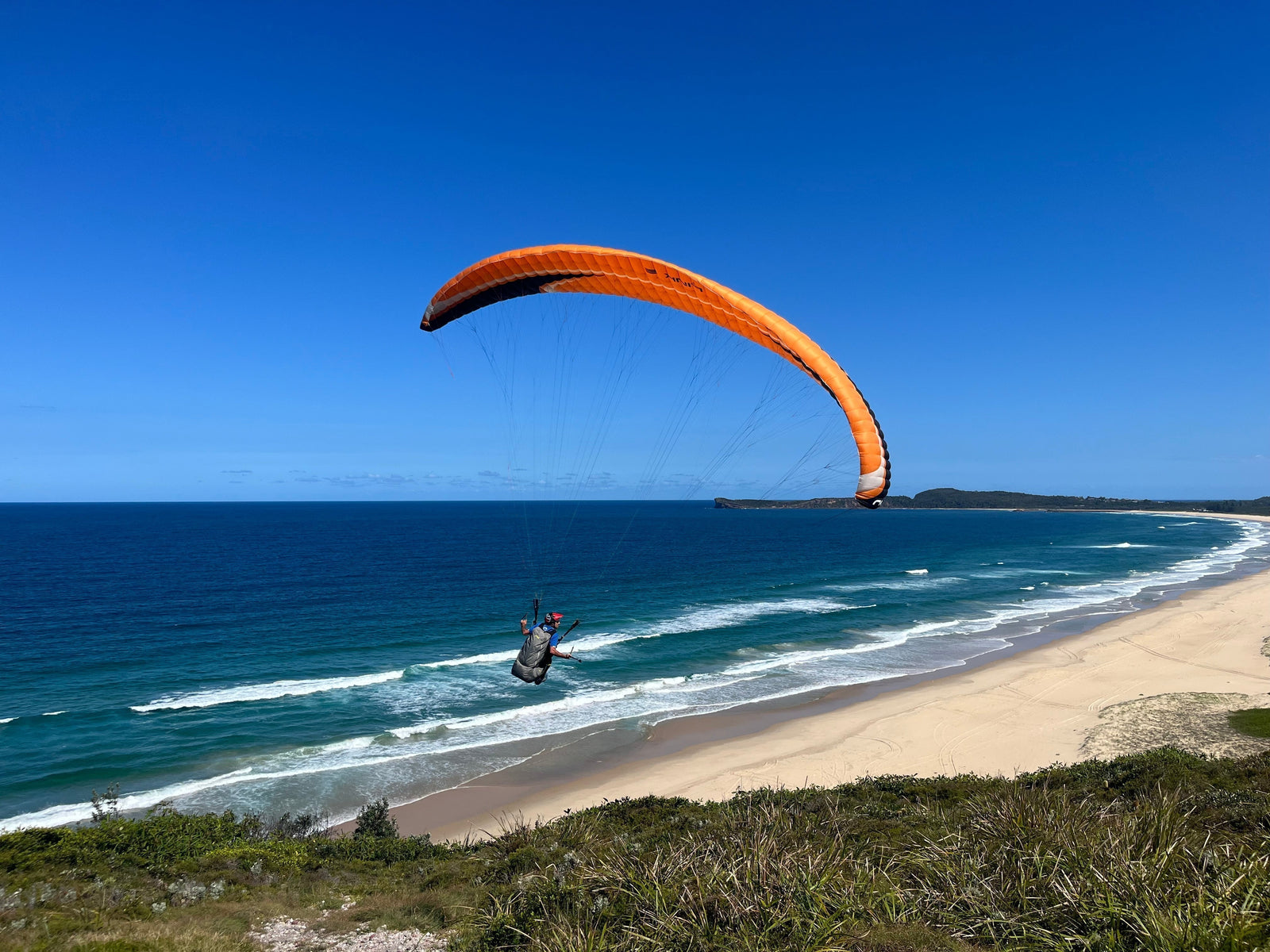
Skill development in paragliding doesn’t end with an initial training course - it’s an ongoing journey. As pilots progress through the SAFA license levels, they must meet increasingly advanced skill and experience requirements, ensuring steady growth and development.
Mastering this exhilarating sport requires time, dedication, and a deep understanding of essential skills and safety principles. To support this progression, the Sports Aviation Federation of Australia (SAFA) has established a structured licensing system, with five distinct levels from PG1 to PG5.
This guide breaks down the requirements, skills, and strategies needed to advance through these levels, helping pilots become confident and capable in their flying journey.
1. PG1 - Student Pilot
The journey starts with a certification course, the first step to becoming a licensed paraglider pilot under SAFA. These courses typically last 9 to 10 days, depending on weather conditions. They provide foundational knowledge and skills necessary to become a safe and competent pilot. The student pilot licence is known as PG1.
SAFA PG1 Definition:
"A PG1 Pilot Certificate authorises the holder to act, under the direct supervision of an approved SAFA PG Instructor who is under the supervision of an approved SAFA PG Chief Flight Instructor, as Pilot-In-Command for the purpose of increasing his or her flying skills in order to qualify for the issue of a SAFA PG2 Pilot Certificate, or engaging in flying practice in order to requalify for a certificate that is no longer valid."
2. PG2 - Solo Flying Under Supervision
After completing the student certification course, you are licensed to fly solo but under supervision. This stage is known as PG2. At this level, take-off and landing are limited to flying sites with easier ratings, ensuring that new pilots handle manageable conditions.
SAFA PG2 Definition:
"A PG2 Pilot Certificate authorises the holder to act as Pilot-In-Command of a paraglider subject to:
“On-Site Supervision” by an Instructor, Safety Officer or Duty Pilot and under conditions considered by an Instructor, Safety Officer or Duty Pilot to be suitable for PG2 Pilots;
- Maintaining a “Supervised Pilot Log Book”, including obtaining the names and signatures of the Instructor or Safety Officer or Duty Pilot providing direct supervision of the PG2 certificate holders operations.
- Any limitations imposed by a Duty Pilot, Safety Officer, or the owner of the site and/or the Safety Committee of the Club that control operations at the site;
- Operations being limited to within 25 nautical miles of the place at which the pilot launched;
- The pilot in command having performed three flights within the preceding 90 days, in an aircraft of the type being used;
- Limitations specified within the SAFA Operations Manual and relevant legislation; and
- When so directed by a Duty Pilot, or Safety Officer, a holder of a PG2 Pilot Certificate when acting as pilot-in-command shall attach a red streamer at least one metre long to the risers of the paraglider.
- If for any reason, a PG2 Pilot Certificate holder has been unable to perform three flights, in an aircraft of the type being used within the preceding 90 days, he/she is to undergo a check flight under the direct supervision of an appropriate SAFA Instructor or Senior Safety Officer."
3. PG3 - Limited Unsupervised Flying
To reach the PG3 level, you need to accumulate at least 15 flying hours over 60 successful flights and 25 flying days. Of this, 2 hours need to be thermalling flights and you need to have flown from 5 different sites. You also need to obtain a VHF Radio Endorsement. The PG3 certification allows for limited unsupervised flying, giving you more freedom while ensuring you have the necessary experience to fly safely.
SAFA PG3 Definition:
"A PG3 Pilot Certificate authorises the holder to act as Pilot-In-Command of a paraglider subject to:
- Any limitations imposed by a Duty Pilot, Safety Officer, or the owner of the site and/or the Safety Committee of the Club that control operations at the site;
- Operations limited to classified sites and conditions designated by controlling clubs to be suitable for PG3 Pilots;
- Operations being limited to within 25 nautical miles of the place at which the pilot launched;
- The pilot in command having performed three flights within the preceding 90 days, in an aircraft of the type being used; (cc) Limitations specified within the SAFA Operations Manual and relevant legislation; and
- If for any reason, a PG3 Pilot Certificate holder has been unable to perform three flights, in an aircraft of the type being used within the preceding 90 days, he/she is to undergo a check flight under the direct supervision of an appropriate SAFA Instructor or Senior Safety Officer."
4. PG4 - Flying at More Challenging Sites
The next step is the PG4 level, where you are eligible to fly at more difficult sites. To achieve this, you must have have had your PG3 licence for at least 12 months, have at least 30 hours of flying and sit a practical and theory exam. This level signifies a significant advancement in your skills and experience.
SAFA PG4 Definition:
"A PG4 Pilot Certificate authorises the holder to act as Pilot-In-Command of a paraglider subject to:
- Operations limited to classified sites and conditions designated by controlling clubs to be suitable for PG4 Pilots;
- Any limitations imposed by a Duty Pilot, Safety Officer, the owner of the site and/or the Safety Committee of the Club that controls operations at the site;
- Operations being limited to within 25 nautical miles of the place at which the pilot launched except where the proposed flight path is approved in advance by a Safety Officer (or higher) who is the holder of an PG5 Pilot Certificate.
- Limitations specified within the SAFA Operations Manual and relevant legislation; and,
- Limitations as directed by CASA."
5. PG5 - The Pinnacle of Pilot Certification
The PG5 certification is the highest level for pilots. It requires 80 flying hours and practical and theory exams. This level allows you to fly as far as your skills and conditions permit, marking you as an expert in the field.
SAFA PG5 Definition:
"A PG5 Pilot Certificate authorises the holder to act as Pilot-In-Command of a paraglider subject to:
- Any limitations imposed by a Duty Pilot, Safety Officer, owner of the site and/or the Safety Committee of the Club that controls the operations at the site being used; and
- Limitations specified within the SAFA Operations Manual and relevant legislation."
6. Specialised Certifications
For those interested in Powered Paragliding (PPG), there are specialised student certification courses. These require a minimum of 20 hours of flight instruction before solo flying. Additional endorsements for cross-country flying are also available for extended capabilities.
The Importance of Safety and Responsibility
Safety and responsibility should remain at the forefront of your mindset throughout your paragliding progression. Understanding your limitations, respecting regulations, and prioritising safety protocols are non-negotiable aspects of being a responsible paraglider pilot.
Here are some key safety considerations:
- Regular Equipment Checks: Always ensure your paragliding equipment is in excellent condition and regularly inspected by certified technicians.
- Weather Awareness: Continuously monitor weather conditions and avoid flying in adverse weather, such as strong winds, thunderstorms, or turbulent air.
- Respect Local Regulations: Comply with all local, regional, and national regulations governing paragliding activities. These regulations are in place to ensure your safety and that of others.
- Training and Certification: Seek proper training and certification through organisations recognised by SAFA to ensure you have the necessary skills and knowledge for safe flying.
- Risk Assessment: Conduct a thorough risk assessment before each flight, considering weather, terrain, and your personal abilities.
Conclusion
Progressing through the SAFA license levels (PG1–PG5) is an exciting and rewarding journey of skill development and personal growth. Each step presents more advanced requirements, encouraging you to refine your technique, expand your knowledge, and become a more capable, confident and independent pilot. With patience, dedication, and a commitment to safety, you'll gain the experience needed to navigate a wide range of flying conditions.
At High Adventure, we’re passionate about supporting pilots at every stage of their journey, offering guidance and training to help you advance through the ranks. Whether you're just starting out or looking to take your skills to new heights, join us to embark on a fulfilling journey towards mastering the skies.


